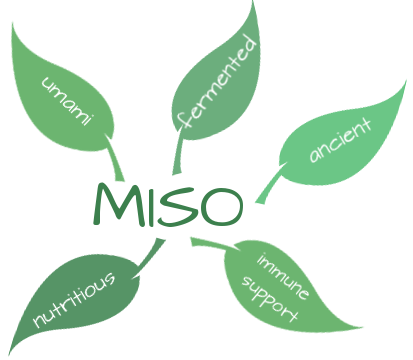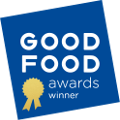Frequently Asked Questions
- 1 - 4 bottles $11.85
- 5 - 12 bottles $15.85
We work hard to keep your shipping as affordable as possible and ship USPS to all locations in the US.
Refrigerate upon receipt. Keep refrigerated: Made in small batches with fermented ingredients and vinegar, Miso Mayo is marvelously fresh out of the fridge for 7 days!
Returns/Refunds – please contact us for refund/replacement if your package is damaged in transit or if product is not as described.
Sorry, no international shipping.Please note that orders placed after 11 a.m. on Wednesday may ship the following Monday. We want your MISO MAYO to arrive in beautiful condition and do not like to risk it sitting overnight in a truck or warehouse on its way to your doorstep.

MISO
Delicious and easy to use, miso has been prized for more than 2000 years in China and Japan for its health-giving benefits, digestion-aiding enzymes and the ability to help assimilate other foods. Miso comes in a wide range of flavors, colors, textures and aromas and is used as an all-purpose seasoning. Our miso is a unique and savory seasoning made of naturally fermented soybean paste from Hawaii.
Mood, energy, sleep, immunity and inflammation benefits are connected to your gut microbiome: a healthy gut microbiata comes down to balance, and fermented foods like miso can be part of a healthy-living diet. Miso is a highly-nutritious, probiotic fermented food that supports digestion, absorption, and overall intestinal health.
Miso:
-Contains probiotics that help strengthen gut flora, reducing growth of harmful bacteria,
and boost the immune system (much of your immune system is housed in your gut!)
-Is a brain builder – choline, Vitamin B and vitamins like niacin and folate support the brain.
-A complete and concentrated source of protein, Vitamin E and several B vitamins inc. B12 (which provide strong immune response to viruses & bacteria), and the 8 essential amino acids, (By the way, did you know that soybeans contain more high-quality protein, 35-36%, than any other plant or animal food?)
-A living cultured food containing lactic acid-forming bacteria and other health- giving microorganisms and essential nutrients.
-Is rich in antioxidants.
-Contains a fraction of the sodium used in moderate to low-salt diets (only 5.5- 13% sodium chloride versus 99% in table salt).
Miso around the world is made with a koji starter. Koji is steamed rice that has had koji-kin, or koji mold spores, cultivated onto it. This magical mold, for which the official scientific name is Aspergillus Oryzae, creates several enzymes as it propagates, and these are what break the starches in rice into sugars that can be fermented by the yeast cells, which then give off carbon dioxide and alcohol.
An excellent reference is The Book of Miso: Food for Mankind by William Shurtleff and Akiko Aoyagi. Published by Ballantine Books, Random House. 1976.
Article: Art of Making Miso, Los Angeles Times
Committed to environmental stewardship and a better food system, safeguarding biodiversity by creating products free of genetically modified ingredients, and favoring practices that build soil health for generations to come without the use of pesticides and herbicides. Plant-based and made with gut-and heart-healthy ingredients. Miso Mayo is vegan and keto-friendly, and packed in small batches to ensure quality and freshness.
Our secret ingredient.
Salty, sweet, sour, bitter, and . . . umami. The fifth taste sensation, umami is a Japanese word and concept of some antiquity, and is said to involve all the senses, providing one with a feeling of perfect quality in a taste, or of some special emotional circumstance in which a taste is experienced.
Savoury, proteiny, safisfying - umami describes the full-bodied flavor of soy sauce, chicken soup, aged cheese, cooked tomato, mother's milk, fish stock, cured meat. Along with salt and sugar, umami is a primal signal about the food we are eating - in the case of umami, about the presence of proteins and amino acids. It blooms in the mouth and hits the back of the tongue.
And that is why so many people keep buying MISO MAYO!
(P.S. Researchers in California and New Jersey have discovered that the T1R1 flavor receptor on the tongue is shaped like a Venus flytrap, allowing the amino acid glutamate to remain in the "trap" longer giving off the umami flavor sensation. Look for flavor developers to begin enhancing foods with an "umami flavor", hopefully reducing the use of salt and consequently promoting healthier eating.)
For more information: Society for Research on Umami Taste at srut.org
Vegetarianism was first recorded by Pythagoras of Samos around the fifth century B.C. - the cardinal rule being "never take any substance into the stomach that once had life." Greek philosophers like Plato, Epicurus and Plutarch were also "vegetarians". The term was popularized by the Vegetarian Society in England nearly 150 years ago. Vegetarianism usually permits the eating of eggs, dairy products and honey, as well as the wearing of animal products like leather, wool and silk.
Flexitarians are your almost-vegetarians. They generally avoid meat, but sometimes break the bond and make exceptions.
"Veganism" is the practice of living on fruits, nuts, vegetables, grains and other wholesome nonanimal products," sayeth Yorkshireman Donald Watson in 1944 - allowing also that mother's milk is permitted for babies. Watson, 94 years young in 2005, founded the newsletter "The Vegan News" and prefers the VEE-gan (hard g) pronunciation..
A whole foods Plant-Based diet is not the same as veganism, and emphasizes eating whole fruits and vegetables, consuming lots of whole grains, and staying away from (or minimizing) the intake of animal products and processed foods – including vegan desserts made with refined sugar or bleached flour.
Reducetarians are committed to eating less meat - red meat, poultry, and seafood - as well as less dairy and fewer eggs, regardless of the degree or motivation…because not everyone is willing to follow an "all-or-nothing" diet.
Paleo diet (aka caveman diet, Stone Age diet, hunter-gatherer diet). The Paleolithic diet is designed to emulate the diet of wild plants and animals eaten by humans during the Paleolithic era. Proponents avoid dairy products, grains, legumes, processed oils, and refined sugar.
Pegans combine some principles of the paleo diet and veganism and prescribes a plant-based eating style. Followers eat vegetables, fruits, nuts, seeds, meat, fish, and eggs and avoid dairy, grains, legumes, sugar, and processed foods.
Keto Diet (aka low carb diet) is made up of mostly fats (75 percent of your daily calories), some protein (20 percent) and a small amount of carbs (5 percent) to reduce inflammation and lose weight - choose low-carb foods such as meat, fish, eggs, vegetables, and good fats. (Originally developed to treat people with epilepsy).
Rawists prefer theirs . . . raw.
Pescetarians/Vegequarians will eat seafood, but not meat or fowl.
Fruitarians, who eat only raw fruits, seeds and nuts and generally avoid harming the plant from which they come.
Lacto-ovo vegetarians adhere to the standards of vegans but eat dairy products and eggs.
Lacto vegetarians allow dairy, but not eggs.
Pollo-vegetarians avoid red meat, but eat fowl.
FYI - "The macrobiotic diet is based loosely on Japanese eating patterns and principles of Traditional Asian Medicine. The traditional macrobiotic diet is vegan, consisting of whole grains, vegetables, seaweeds, fermented foods, nuts, seeds, and seasonal fruits . It excludes meat, eggs, and dairy products, and fluid intake is restricted, although some more liberal forms of the macrobiotic diet include fish and other animal products." By Tania Shaw from the CAM Handbook.

